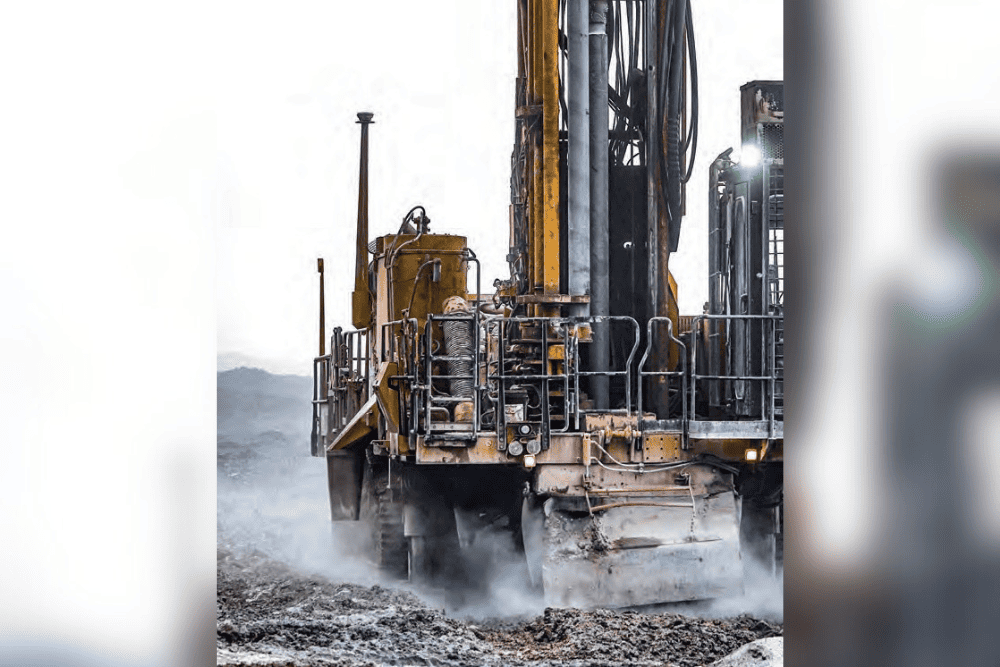
As blasting technology continues to advance, the use of explosives to break rock is expected to have an increasingly smaller environmental impact.
In conventional blasting when explosive material is detonated, a huge amount of effective and non-effective energies that can produce gas and shock — accompanied by light, heat, sound and pressure — are released.
Non-effective energy can cause disastrous effects and huge destruction to human lives as well as the surrounding environment.
In this instance, the most common safety concerns and undesirable side effects include ground vibrations, fly-rock, noise, premature explosion as well as air or dust pollution.
Research has shown, however, that this can be managed with proper blast design and the adoption of new technologies.
This may involve using precise delay timing, controlling the direction of the throw, proper distribution of explosives inside blast holes as well as the selection of explosives in close matching with the characteristic impedance of the targeted rock.
By following these procedures, mine operators should be able to meet safety and environmental needs at a minimum operating cost while optimising the utilisation of ore deposits.
It has been established that explosives use can be reduced by employing air decks at strategic locations of the blast holes, while 30 per cent — or an even more effective cast ratio — is possible in specific cases of dragline and shovel-dumper faces.
According to a recent article by Market Research Intellect (MRI), the global mining explosives market is projected to expand at a compound annual growth rate of 5 to 6 per cent over the next decade, with this rise being fuelled by the increasing industrialisation and urbanisation in emerging economies, where construction and manufacturing sectors are booming.
“The strategic importance of mining explosives cannot be overstated,” MRI said.
“They not only increase the efficiency of mining operations but also improve safety by allowing for controlled detonations.
“The precision and power of modern explosives help minimise the environmental impact of mining activities, as they reduce the need for extensive mechanical drilling and blasting.
“This results in fewer disturbances to the surrounding ecosystem and lower emissions of greenhouse gases.”
Investing in the industrial mining explosives market, MRI said, offers lucrative opportunities for both businesses and punters.
At the moment, its growth is being driven by several positive factors, including technological advancements, increased exploration activities and the rising demand for minerals.
Meanwhile, the shift towards more sustainable and efficient mining practices is also opening new avenues for innovation in explosive materials and technologies.
One of the key trends in the expanding market, MRI noted, is the development of eco-friendly explosives.
“These environmentally responsible products are designed to reduce the environmental impact of mining activities,” it said.
“For instance, water-based emulsion explosives are gaining popularity due to their lower toxicity and reduced risk of accidental detonation.
“The increasing adoption of such products reflects a broader industry trend towards sustainability, making it an attractive investment point for those interested in green technologies.”
Furthermore, the market is witnessing a surge in mergers and acquisitions as companies seek to strengthen their positions and expand their product portfolios.
Recent corporate deals, MRI said, had seen leading players in the industry collaborate to develop new explosive formulations and delivery systems.
These partnerships were not only enhancing the capabilities of individual businesses, but also driving overall growth.
“The industrial mining explosives market is characterised by continuous innovation and technological advancements,” it noted.
“One of the most notable trends is the use of digital technologies to optimise blasting operations.
“Smart blasting techniques, which incorporate data analytics and real-time monitoring, are revolutionising the industry.
“These technologies allow for precise control over the blasting process, resulting in improved fragmentation, reduced waste and enhanced safety.”
In addition, there has been a growing interest in electronic detonators, which offer greater precision and reliability compared to traditional mechanical systems.
“Electronic detonators enable precise timing and sequencing of explosions, which is crucial for maximising the efficiency of the blasting process,” MRI added.
“This technology is particularly valuable in complex mining operations where precision is key to achieving desired outcomes.
“As companies invest in research and development, we can expect to see the introduction of more advanced and efficient explosive materials.
“Innovations such as nanotechnology-based explosives and biodegradable materials hold the potential to revolutionise the market.
“Additionally, the integration of artificial intelligence and machine learning in blasting operations will further enhance efficiency and safety.”








